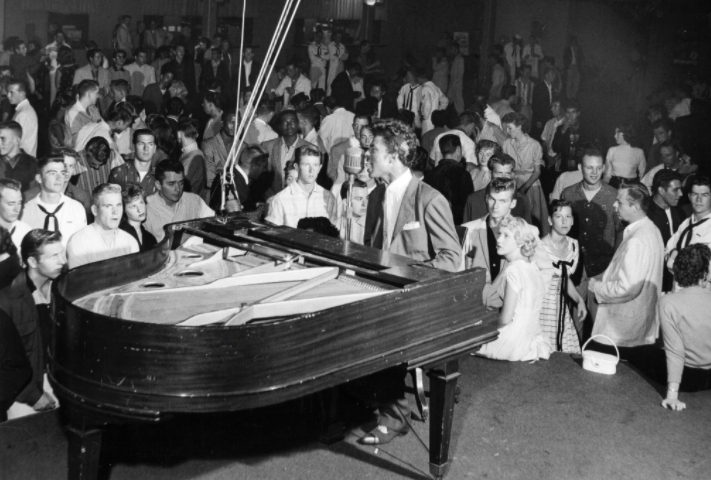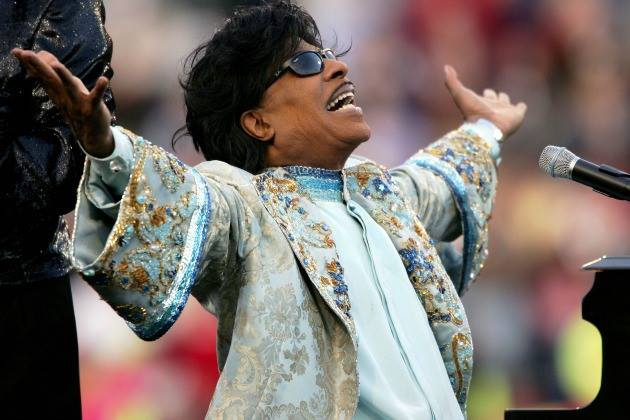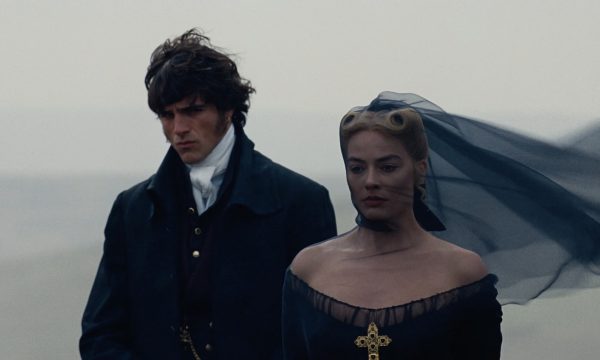Bobby Holland, 2020 Hollywood Beauty Awards Photography Honoree
Richard Wayne Penniman, known to the world as "Little Richard," died of bone cancer on Saturday. The musician's son, Danny Jones Penniman, confirmed the pioneer's death to Rolling Stone.
Born on December 5th, 1932, in Macon, Georgia, he was one of 12 children and grew up around uncles who were preachers. "I was born in the slums. My daddy sold whiskey, bootleg whiskey," he told Rolling Stone in 1970. Although he sang in a nearby church, his father Bud wasn't supportive of his son's music and accused him of being gay, resulting in Penniman leaving home at 13 and moving in with a white family in Macon. But music stayed with him: One of his boyhood friends was Otis Redding, and Penniman heard R&B, blues, and country while working at a concession stand at the Macon City Auditorium.
After performing at the Tick Tock Club in Macon and winning a local talent show, Penniman landed his first record deal, with RCA, in 1951. (He became "Little Richard" when he about 15 years old, when the R&B and blues worlds were filled with acts like Little Esther and Little Milton; he had also grown tired with people mispronouncing his last name as "Penny-man.") He learned his distinctive piano style from Esquerita, a South Carolina singer and pianist who also wore his hair in a high black pompadour.

Michael Ochs Archives/Getty Images
Being a founding father of Rock & Roll, Penniman's fervent shrieks, flamboyant garb, and joyful, gender-bending persona embodied the spirit and sound of what was a new art form. Starting with "Tutti Frutti" in 1956, Little Richard cut a series of unstoppable hits – "Long Tall Sally" and "Rip It Up" that same year, "Lucille" in 1957, and "Good Golly Miss Molly" in 1958 – driven by his simple, pumping piano, gospel-influenced vocal exclamations and sexually charged (often gibberish) lyrics. "I heard Little Richard and Jerry Lee Lewis, and that was it," Elton John told Rolling Stone in 1973. "I didn't ever want to be anything else. I'm more of a Little Richard stylist than a Jerry Lee Lewis, I think. Jerry Lee is a very intricate piano player and very skillful, but Little Richard is more of a pounder."
Although he never hit the Top 10 again after 1958, Little Richard's influence was massive. The Beatles recorded several of his songs, including "Long Tall Sally," and Paul McCartney's singing on those tracks – and the Beatles' own "I'm Down" – paid tribute to Little Richard's shredded-throat style. His songs became part of the rock & roll canon, covered over the decades by everyone from the Everly Brothers, the Kinks, and Creedence Clearwater Revival to Elvis Costello and the Scorpions. "Elvis popularized [rock & roll]," Steven Van Zandt tweeted after the news broke. "Chuck Berry was the storyteller. Richard was the archetype."
Little Richard's stage persona – his pompadours, androgynous makeup, and glass-bead shirts — also set the standard for rock & roll showmanship; Prince, to cite one obvious example, owed a sizable debt to the musician. "Prince is the Little Richard of his generation," Richard told Joan Rivers in 1989, before looking at the camera and addressing Prince. "I was wearing purple before you was wearing it!"
"If you love anything about the flamboyance of rock & roll, you have Little Richard to thank," says the Black Keys' Dan Auerbach, a longtime fan. "And where would rock & roll be without flamboyance?
Twitter has been ablaze with tributes and condolences from other rock legends such as Brian Wilson and Bob Dylan. Brian Wilson tweeted: "I'm very sorry to hear about Little Richard. He was there at the beginning and showed us all how to rock and roll. He was a such a great talent and will be missed. Little Richard's music will last forever. Love & Mercy, Brian." and Bob Dylan said: "I just heard the news about Little Richard and I'm so grieved. He was my shining star and guiding light back when I was only a little boy. His was the original spirit that moved me to do everything I would do."
If he wasn't officially the King of Rock & Roll, he certainly was the architect.















